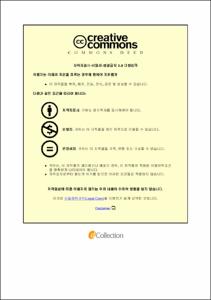수계 분산 음향화학적 혼합공정을 통한 BaTiO3 분말의 고상 합성 연구
- Abstract
- Because of its excellent ferroelectric properties, low loss characteristics, chemical and mechanical stabilities, and compatibility to base-metal electrodes, BaTiO3-based oxide compounds have been the most important ceramic materials for multilayer ceramic capacitors (MLCC). As the miniaturization of the MLCC and the extend of their uses proceed, volume efficiency and reliability of dielectric layer have been increasingly important. To meet the tight limitation to the layer thickness (< 1 μm) and also to guarantee the reliability, the use of well-dispersed, fine and uniform BaTiO3 powders are essential to fabricate the dielectric layer for the MLCC. These powders have been prepared by hydrothermal process, however, intergranular pores induced by inevitable hydroxyl groups in the hydrothermal process can deteriorate the breakdown strength of the dielectric layers, resulting in the degradation of the reliability. Furthermore, its high process cost owing to the use of expensive precursors and the difficulty of eliminating impurities in the hydrothermal process have been regarded major drawbacks in highly competitive MLCC industries.
Meanwhile, solid-state reaction using inexpensive BaCO3 and TiO2 raw materials is a traditional process for synthesizing relatively coarse BaTiO3 powders. However, because of its high calcination temperature (~ 1200 ℃), solid-state reaction can provide highly dense BaTiO3 powders and this is desirable in terms of the reliability. Furthermore, it has been reported that submicron-sized BaTiO3 powders can be successfully prepared by the solid-state reaction through the proper pre-treatments of the raw materials, such as high-energy ball-milling, mechanochemical and sonochemical activation. Among them, sonochemical activation, which uses ultrasonic irradiation for the mixing and activation of raw materials, is a time-saving, cost-effective and contamination-free process as compared with other pre-treatment methods.
Recently, Jin et al. reported that sonochemical activation of BaCO3 and TiO2 raw materials in ethanol can significantly enhance the solid-sated synthesis of submicron-sized BaTiO3 powders (~ 200 nm) at relatively low temperatures (~ 1000 ℃). It was attributed to mostly the physical effect of the ultrasonic irradiation, i.e., the preferential fragmentation of BaCO3. In terms of the process cost, water is a more desirable mixing medium than ethanol for the sonochemical activation, but it dissolves BaCO3 partially and leads to the leaching on Ba2+ ions. Li et al. reported that the amount of leached Ba2+ ions from BaCO3 in aqueous medium decreases with increasing pH and the dissolution stops when the concentration of H3O+ available is completely consumed. Therefore, understanding the chemical effect, i.e., the pH-dependent Ba2+ leaching is of great interest for the sonochemically activated solid-state synthesis of BaTiO3 powder using aqueous medium.
In this work, we report the effect of pH on the sonochemical activation in aqueous medium for the solid-state synthesis of BaTiO3 powders. The raw materials of BaCO3 and TiO2 powders were sonochemically activated under various pH conditions in water with an ultrasonic power of 600 W and then calcined at 900-1200 ℃. For comparison, the raw materials were also sonochemically activated at the same experimental conditions except for that the mixing medium was ethanol. Regardless of the calcination temperature, the highest conversion ratio to BaTiO3 phase was obtained at pH = 5. Furthermore, they always exhibited higher conversion ratios compared to those treated in ethanol. Therefore, it was confirmed that both the physical and chemical effects contributed to the sonochemical activation of raw materials in aqueous medium. Detailed characterizations on the structural, dielectric and ferroelectric properties of the resulting BaTiO3 powders and ceramics were performed and the results will be presented.
Key words : MLCCs, BaTiO3, solid-state synthesis, sonochemical mixing.
- Issued Date
- 2022
- Awarded Date
- 2022. 8
- Type
- Dissertation
- Publisher
- 부경대학교
- Affiliation
- 부경대학교 대학원
- Department
- 대학원 스마트그린기술융합공학과
- Advisor
- 임영수
- Table Of Contents
- 제 1 장 서론 1
제 2 장 이론적 배경 5
2.1. 다적층 세라믹 커패시터(MLCC, multi-layer ceramic capacitor) 5
2.2. 유전체(Dielectrics) 11
2.3. 강유전체(Ferroelectrics) 15
2.4. 페로브스카이트 구조(Perovskite materials) 20
2.5. 티탄산바륨(BaTiO3, Barium titanate) 22
2.6. 티탄산바륨의 합성법(Synthesis of BaTiO3) 27
2.6.1. 수열합성법(Hydrothermal synthesis) 27
2.6.2. 고상합성법(Solid-state synthesis) 32
2.7. 음향화학(Sonochemistry) 37
2.7.1. 음향 공동화(Acoustic cavitation) 37
제 3 장 실험방법 및 특성평가 42
3.1. 실험방법 42
3.1.1. BaTiO3 분말의 합성 42
3.1.2. BaTiO3 세라믹 제작 43
3.2. 특성평가 45
3.2.1. 초기 원료의 입도분석(PSA, Particle size analysis) 45
3.2.2. 제타전위(Zeta-potential analysis) 45
3.2.3. 유도결합 플라즈마 질량분석법(ICP, Inductively Coupled Plasma Mass Spectrometer) 46
3.2.4. X-선 회절 분석법(XRD, X-ray diffraction analysis) 47
3.2.5. 분말 및 소결체에 대한 정량 분석 47
3.2.6. 분말 및 소결체의 미세구조 분석 51
3.2.7. 소결체의 전기적 특성 평가 51
제 4 장 실험결과 및 고찰 52
4.1. 수계 음향화학적 혼합공정이 초기 원료 입도에 미치는 영향 52
4.2. 수계 음향화학적 혼합공정이 BaTiO3 고상합성에 미치는 영향 57
4.2.1. 수계 pH에 따른 BaTiO3 상 전화율 57
4.2.2. 수용매가 BaTiO3 고상합성에 미치는 화학적 효과에 대한 모델 59
4.2.3. 초음파 출력에 따른 BaTiO3 상 전화율 65
4.3. 음향화학적 혼합공정을 통해 제조된 BaTiO3 세라믹의 구조적 특성 69
4.3.1. BaTiO3 결정구조적 특성 69
4.3.2. BaTiO3 미세구조적 특성 70
4.4. 음향화학적 혼합공정을 통해 제조된 BaTiO3 세라믹의 전기적 특성 76
4.4.1. BaTiO3 세라믹의 유전 특성 76
4.4.2. BaTiO3 세라믹의 강유전 특성 77
4.4.3. BaTiO3 세라믹의 누설전류 및 압전 특성 78
제 5 장 결론 82
참고문헌 84
국문 요약 95
- Degree
- Master
- Appears in Collections:
- 대학원 > 스마트그린기술융합공학과
- Files in This Item:
-
-
Download
 수계 분산 음향화학적 혼합공정을 통한 BaTiO3 분말의 고상 합성 연구.pdf
기타 데이터 / 22.09 MB / Adobe PDF
수계 분산 음향화학적 혼합공정을 통한 BaTiO3 분말의 고상 합성 연구.pdf
기타 데이터 / 22.09 MB / Adobe PDF
-
Items in Repository are protected by copyright, with all rights reserved, unless otherwise indicated.